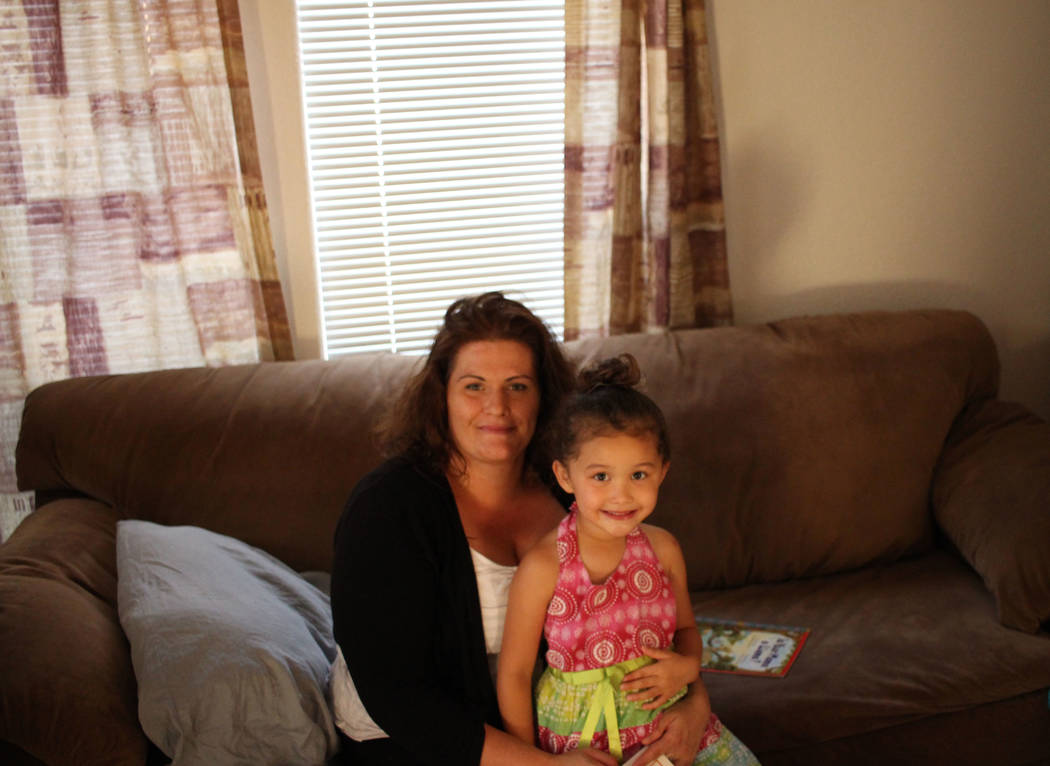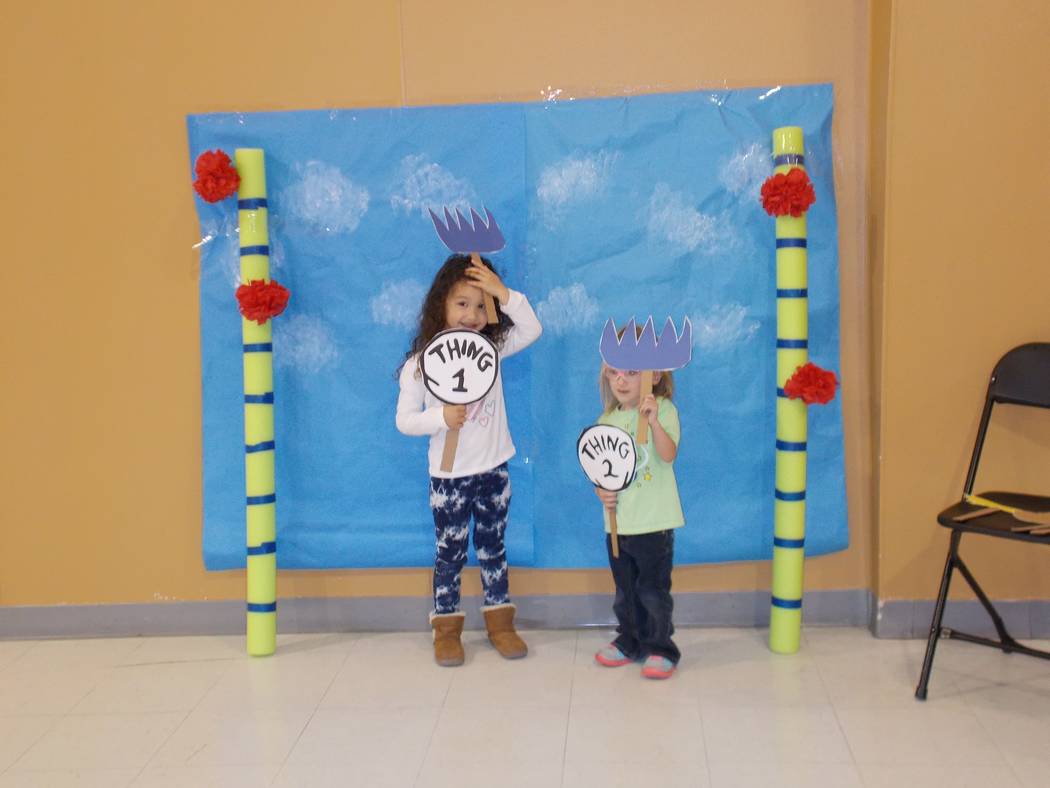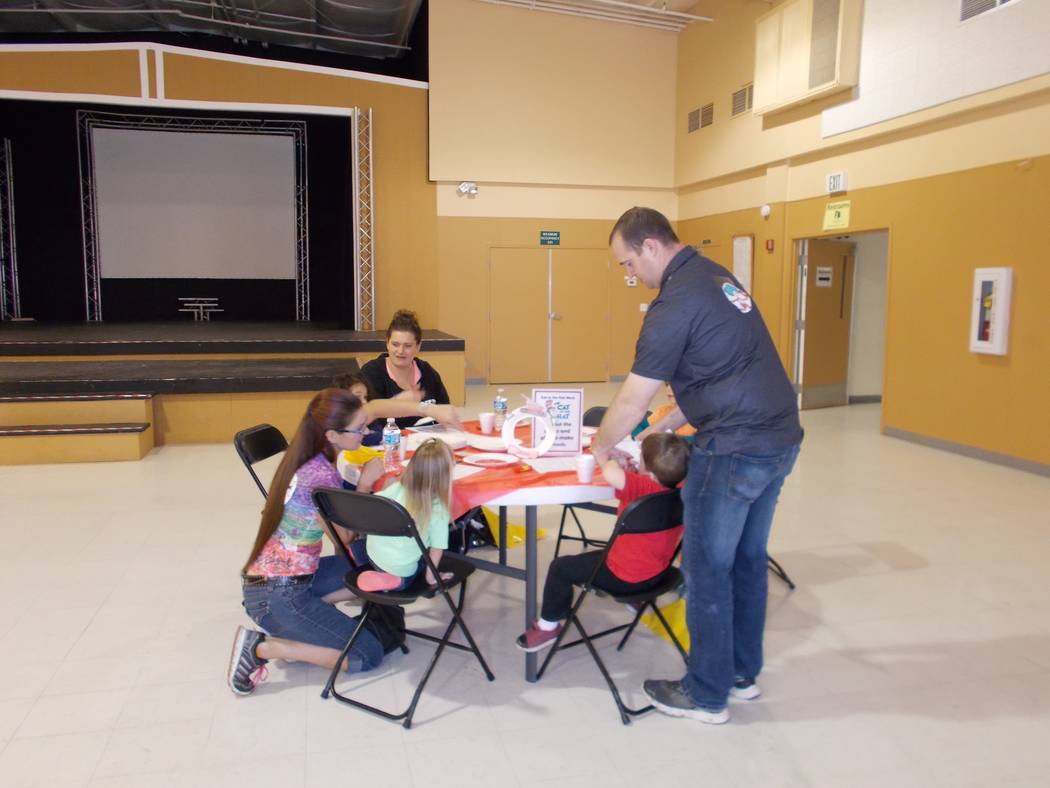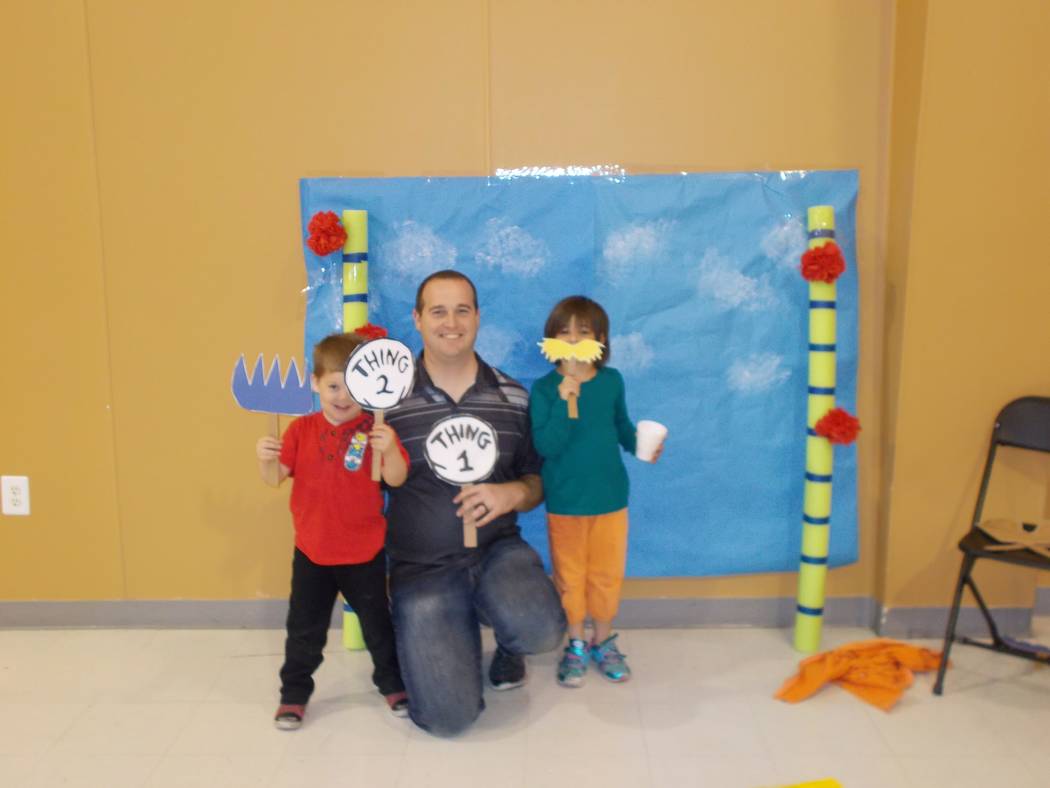Pre-K program plans for upcoming school year in Pahrump area
Brandi Johnson, mother of a pre-kindergarten child, said the town of Pahrump has very few options for parents looking to prepare kids to enter the school system.
But through a chance encounter, she learned about a local program that offered her that opportunity.
Johnson’s 3-year-old daughter is one of more than two dozen local children in the Home Instruction for the Parents of Preschool Youngsters (HIPPY) program, by way of what is known as “home visiting.”
The program, implemented by Sunrise Children’s Foundation, helps parents educate their children in basic skills, which could lead to later successes for the entire family unit. The program was launched locally in 2015.
“I think she’s way ahead of everything,” Johnson said about her daughter. “I’ve gained a lot of confidence and better communication with my daughter.”
How the program works
Parents or legal guardians involved in the program, designed for three, four and five-year-old children, sit down once a week with a representative, a home visitor, from Sunrise.
During the visits, the parent and representative go through an activity packet and do role-play exercises. Activity packets and materials needed to complete them come at no cost to the enrollee.
The parent then does the same activities with their child throughout the week until the next visit.
The program also hosts a monthly gathering for the enrolled families.
“It gives them an opportunity to socialize with other families,” said Audrey Staves, family services manager at Sunrise Children’s Foundation.
The program runs from October through May and is currently recruiting families for the upcoming year.
Program’s curriculum
The program’s curriculum, which is used in several similar programs across the U.S., is mostly cognitive-based, according to the program’s website. The program focuses on “language development, problem-solving, logical thinking and perceptual skills.”
The program’s curriculum also exposes children to early literacy skills and social/emotional and fine and gross motor skills.
“By the time that child has gone through our program, that’s going to be one of those children that can raise their hand…,” said Angela Triche, director of programs at Sunrise Children’s Foundation.
The activity packets are available in both English and Spanish. Parents work with their children for 15 minutes a day, based on weekly lessons from the meeting with the home visitor.
Triche said the program has a goal of producing “school-ready children.”
“As much as that, we want parents, moms and dads, to know that they are the ones that made that happen,” she said.
These same parents also add more to the community as they progress through the program, according to Dave Sanberg, executive director of Sunrise Children’s Foundation.
“Most of our parents continue on in the school system to advocate for those children, and they become part of the PTA, become part of running the school,” Sanberg said.
Program’s funding at risk
The Home Instruction for the Parents of Preschool Youngsters effort is implemented through a program under the state of Nevada’s Division of Public and Behavioral Health known as Maternal and Infant Early Childhood Home Visiting program (MIECHV), which is funded through federal dollars. The state chose Sunrise as the organization to implement the home visiting program.
“In the more rural areas, the state saw that there was a real need for families to be connected to services that would allow them to help prepare their children for school,” said Triche.
Funding for the program is at risk, she said.
The federal dollars the Maternal and Infant Early Childhood Home Visiting Program receives are appropriated through Congress. In September, the program is up for reauthorization. Without action by Congress, federal funding will end.
“We’d like parents and other supporters to be aware that this (program) only happens if Congress continues to appropriate the resources for us to continue the work we do for children and families across the country,” Triche said.
The program was originally funded by the Affordable Care Act in 2010, when it provided $1.5 billion to several evidence-based home visiting programs. It was reauthorized in 2015 for $800 million.
Some groups have criticized programs such as the Maternal and Infant Early Childhood Home Visiting Program for not being effective, among other reasons.
A report to Congress from the U.S. Department of Health and Human Services in 2016 showed 83 percent of states receiving federal money to implement the Maternal and Infant Early Childhood Home Visiting Program had improvements among participants across four of six benchmarks—a requirement for funding.
Some of these benchmarks included maternal and newborn health, where 81 percent of participants improved; school readiness, with 85 percent of participants showing improvement; family economic self-sufficiency; and a reduction in domestic violence and crime.
State funding for prekindergarten education
In 2016, the state of Nevada was ranked near the bottom for providing state-funded Pre-K programs.
According to a report by the National Institute for Early Education Research (NIEER), released in May, the state was ranked 39 out of 44 states in access to Pre-K for four-year-old children. Nevada was last for access for three-year-old children. There are 29 states that allow three-year-olds to enter pre-k programs that are publicly funded.
Per child, Nevada spent $2,132 in 2016—which was a decrease of $261 from 2015. The state ranked 43 out of 44, according to the report.
Despite having fewer dollars, an increased number of children were served through Nevada’s state Pre-K program, which served 1,566 children in 2016. That was higher than 2015’s 1,428 kids, ages three and four, helped through the program.
Still, less than 1 percent of Nevada’s three-year-old children were enrolled in the state’s Pre-K programs in 2016. For the state’s four-year-old children, 3.8 percent were enrolled in a program under Nevada’s state Pre-K program in 2016, the report by the institute said.
Total dollars spent at the state level in the U.S. was enough to give each child, ages three and four, $4,967, adjusted for inflation, according to the report. Each state, however, varied widely on what was spent per child. Mississippi spent $1,787 per child in 2016, where top-ranking District of Columbia spent $16,812 per child on Pre-K.
With federal sources, Nevada spent $4,512 per child in 2016 in Nevada, the report said.
The state could see an increase in pre-kindergarten funding, as Gov. Brian Sandoval signed Senate Bill 178 into law during the 2017 Legislative Session.
The bill creates a weighted funding formula that gives more monies to underperforming or special needs students. The bill had language that could allow for early education or pre-kindergarten programs to be expanded.
Contact reporter Jeffrey Meehan at jmeehan@pvtimes.com. On Twitter: @pvtimes




















